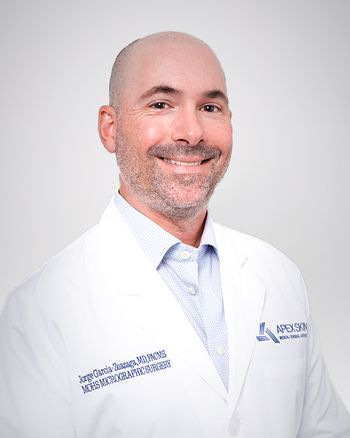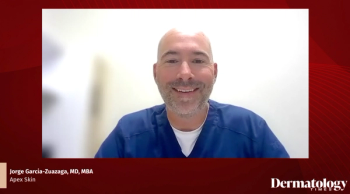
- Dermatology Times, September 2022 (Vol. 43. No. 9)
- Volume 43
- Issue 9
Protecting a Physician’s Most Valuable Asset: Insurance Basics for Young Dermatologists: Part 2
Jason M. O'Dell, MS, CWM, and Michael Lewellen, CFP, discuss what young dermatologists need to know about insurance basics to protect themselves in part 2 of their practice management article.
The most valuable asset for nearly every dermatologist is their ability to practice their profession, as the future income stream from this asset is significant and quantifiable. To protect this asset for themselves and for others dependent on them, dermatologists rely on disability and life insurance as fundamental “asset protectors.” Young dermatologists should secure these tools early on in their careers, and established physicians should regularly review existing insurance policies to ensure they are maintaining necessary levels of protection.
We covered disability insurance in Part 1 of this 2-part article (see the August issue of Dermatology Times®), and now we will focus on the basics physicians need to know about life insurance in Part 2.
Term Life Insurance
A term life insurance policy pays a specific lump sum to your designated beneficiary upon your death. As such, it plays an important role in providing temporary income protection for your family (or practice/partners as part of a buy-sell arrangement).
Given its affordability, term is the most common type of life insurance policy. The premium on a term policy is low compared with other types of life insurance policies because the term policy carries no cash value and provides protection for a limited period of time (referred to as a term; usually 5, 10, 15, or 20 years). Term policies work simply—you pay a premium each year, typically, and the policy pays out if you die within the term period. If not, there is no payment or accumulated value. The vast majority of term policies never pay out because the insured lives past the end of the term.
Permanent Life Insurance
The category of permanent life insurance comprises products that, unlike those of term policies, carry cash values along with death benefits and can last for the entirety of the insured’s life—to age 100, 115, or beyond. (Of course, these products are “permanent” only as long as the required premiums are paid on time.) Because there are several different products in the general category of permanent insurance, and they are more complex than term policies, we will cover them in more depth.
One significant advantage of all permanent policies is that they enjoy tax-free growth of cash value and, if properly managed, tax-free access to the cash value. These tax benefits, along with asset protection in many states, is what attracts many dermatologists to permanent insurance.
Although there are more than 5 major categories of permanent life insurance, we only have room here to describe 2. For more depth on this topic, see the “special offers” at the end of this article to request or download our free book.
1: Whole Life Insurance
Whole life (WL) insurance pays a death benefit to the beneficiary you name and offers you a cash value account with tax-deferred cash accumulation.
Pros: WL insurance has a savings element (cash value) that is tax deferred. The cash value grows based on the life insurance company paying a dividend. This dividend is determined by the life insurance company, is not guaranteed, and is likely to change annually. Because of the low interest–rate environment over the last 15 years, dividend rates on WL policies have been decreasing.
You can borrow from this account free of income tax, or, if it is properly structured, you can cash in the policy during your lifetime. It has a fixed premium that can’t increase during your lifetime (as long as you pay the planned amount), and your premium is invested for you long term. Because it has the cash accumulation component, WL insurance can offer benefits such as tax reduction, wealth accumulation, asset protection, estate planning, and tax diversification of asset classes.
Cons: WL insurance does not allow you to invest in separate accounts (eg, money market, stock, and bond funds). Thus, your policy’s returns will be tied to the life insurance company’s dividend credit based on that company’s underlying investments. It also does not allow you to split your money among different accounts or move your money between accounts, and it does not allow premium flexibility or face amount (the death benefit amount) flexibility.
2: Equity-Indexed Universal Life Insurance
Equity-indexed universal life (EIUL) insurance is a universal life policy (which has more premium and policy flexibility than a WL product) that allows you to select from a list of stock market indices to grow your cash value. If the investments fail, there is a guaranteed minimum death benefit paid to your beneficiary upon your death.
EIUL insurance gives you more upside than a traditional universal life policy because the insurance company contractually agrees to credit the policy’s cash value with the same return as the stock market index the policy holder chooses (typically, the S&P 500 Index, but it can be the Dow, NASDAQ, or others) realized over the same period of time, subject to a cap and a floor. Thus, the policy owner has the upside of the indices (up to the cap) but the risk of the same indices (but only to the floor). Typical floors for an annual return begin at near 0% (no loss of principal), with caps around 10%.
Pros: EIUL insurance enables you to get potentially more upside in the cash value accounts than WL but also gives you downside protection.
Cons: Products are relatively complex, with many choices of indices, participation rates, floors, and caps, and they vary significantly from insurance carrier to insurance carrier. Working with a professional who can help you make good decisions about policy placement and annual management is essential.
Is Permanent Life Insurance a “Good” Investment?
When thinking about permanent life insurance, many dermatologists want to understand whether it is a “good” or “bad” investment. But how can permanent life insurance be a “good” or “bad” investment when the choices within permanent products are so broad and deep? In other words, the structure of a permanent life insurance policy allows for an almost limitless number of underlying investments within the structure, and those investments will provide the policy’s returns.
As we explained, WL insurance offers a bond-based, dividends-type return. Is this good or bad? It depends on what the rest of the market does, doesn’t it? In 2008-09, an asset with such a return would likely have been the best-performing asset class on a physician’s balance sheet. For EIUL insurance, the performance of the policy is based on the owner’s choice of indices, which could work out extremely well—or not.
The fact is, a permanent life policy can be a fantastic, great, good, fair, or poor investment because it isn’t an investment itself; rather, it’s a structure that houses investments, the choices of which are almost innumerable.
Conclusion: Protecting Your Most Valuable Asset Throughout Your Career
All physicians, including dermatologists, should review their disability and life insurance policies regularly throughout their careers to ensure they are maintaining adequate coverage for the most cost-effective premiums.
An experienced insurance advisor can assist you in evaluating your options and selecting policies that fit your needs and long-term financial goals. The authors welcome your questions.
Disclosure:
OJM Group, LLC (“OJM”) is an SEC registered investment adviser with its principal place of practice in the State of Ohio. SEC registration does not constitute an endorsement of OJM by the SEC nor does it indicate that OJM has attained a particular level of skill or ability. OJM and its representatives are in compliance with the current notice filing and registration requirements imposed upon registered investment advisers by those states in which OJM maintains clients. OJM may only transact practice in those states in which it is registered or qualifies for an exemption or exclusion from registration requirements. For information pertaining to the registration status of OJM, please contact OJM or refer to the Investment Adviser Public Disclosure website www.adviserinfo.sec.gov.
For additional information about OJM, including fees and services, send for our disclosure brochure as set forth on Form ADV using the contact information herein. Please read the disclosure statement carefully before you invest or send money.
This article contains general information that is not suitable for everyone. The information contained herein should not be construed as personalized legal or tax advice, or as a recommendation of any particular security or strategy. There is no guarantee that the views and opinions expressed in this article will be appropriate for your particular circumstances. Tax law changes frequently; accordingly, information presented herein is subject to change without notice. You should seek professional tax and legal advice before implementing any strategy discussed herein.
Wealth Planning for the Modern Physician and Wealth Management Made Simple are available free in print or e-book. Download by texting DERM to 844-418-1212.
Articles in this issue
over 3 years ago
Best Practices for Treating Stretch Marks in Pregnancyover 3 years ago
Creating Diverse Teams Takes Work, But Is Worth the Effortover 3 years ago
The Role of Nonprescription Products in the Management of Acneover 3 years ago
Managing Atopic Dermatitis in Skin of Colorover 3 years ago
Shin Guard Dermatitis: What's the Diagnosis?over 3 years ago
Add an Outpatient Infusion Center to Your Dermatology Practiceover 3 years ago
Can Supplements Effectively Manage Hair Loss?over 3 years ago
Consider Mental Health Concerns in Teens With Acneover 3 years ago
Microbiome MusingsNewsletter
Like what you’re reading? Subscribe to Dermatology Times for weekly updates on therapies, innovations, and real-world practice tips.

















